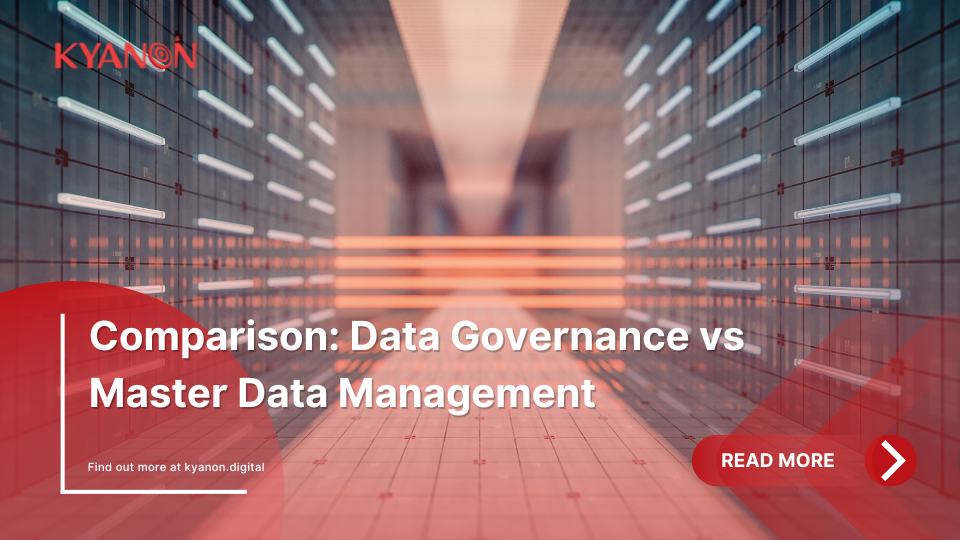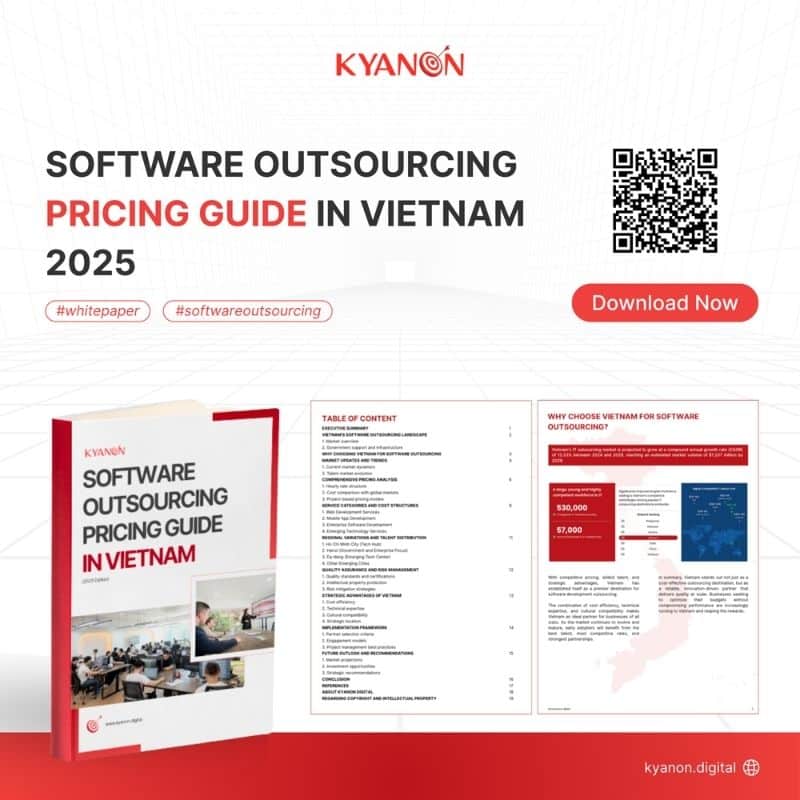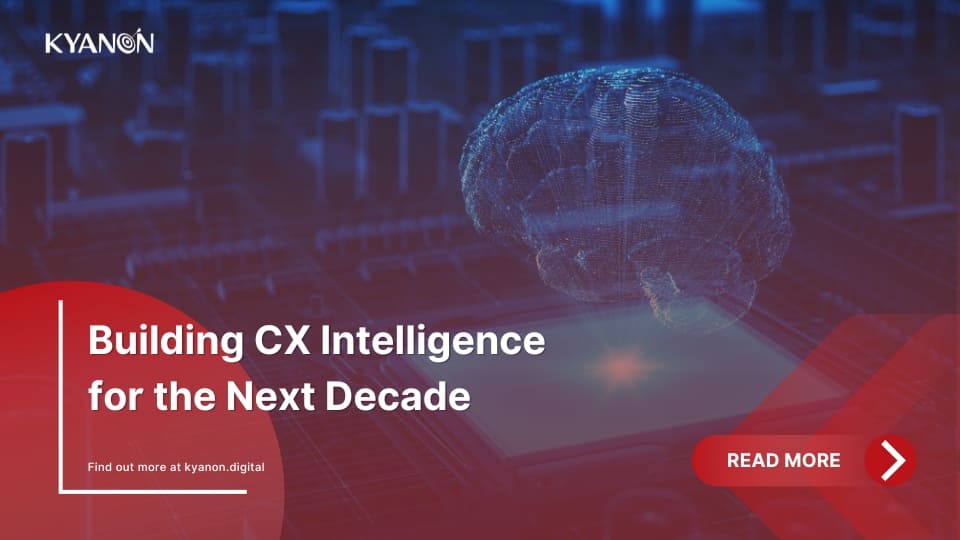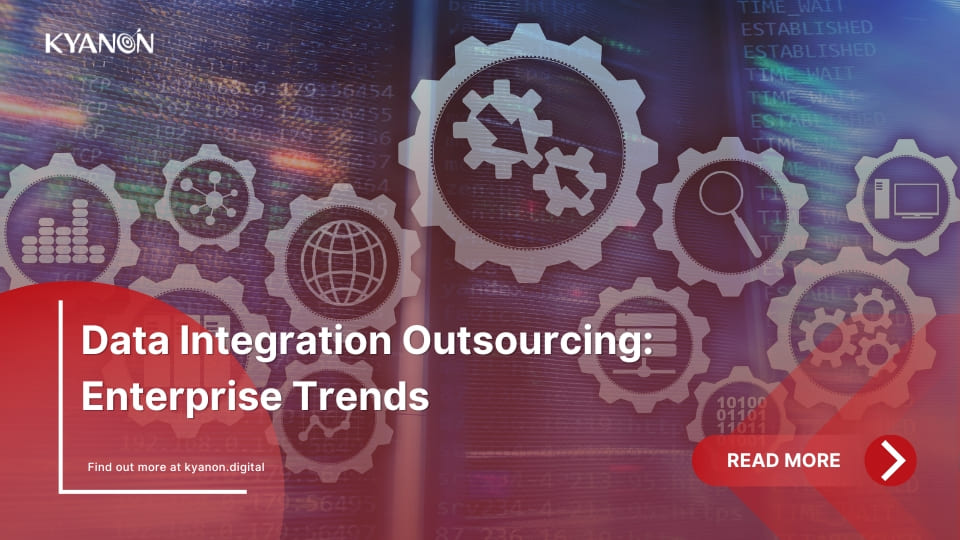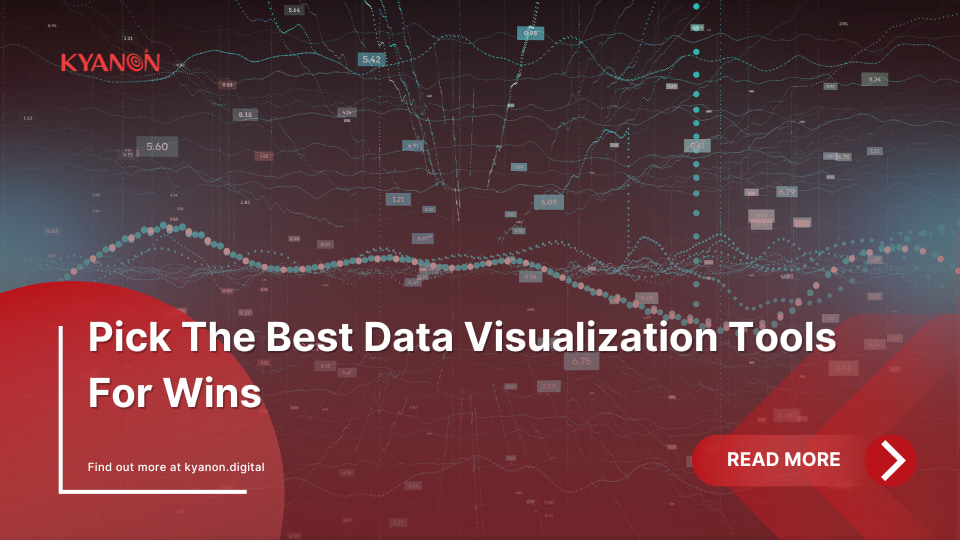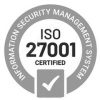Effective data management poses a significant challenge for businesses in the context of rapid economic development. High-quality and consistent data sources play a crucial role in strategic decision-making. As a result, businesses must manage large volumes of data that are often dispersed and require high security. To address these challenges, many businesses use Data Governance and Master Data Management – two precise and efficient data management strategies.
Let Kyanon Digital walk you through the comparison between Data Governance vs Master Data Management to get a deeper understanding of those data management strategies.
1. What is Data Governance?
1.1. Definition and Scope
Data Governance refers to the organization and control of information within an enterprise to ensure data is accurate, secure, and readily accessible when needed. Beyond technical aspects, Data Governance also involves how businesses manage and establish policies and procedures to guarantee the proper use of data.
Key Components:
- Policies: the general rules and principles that a business adopts to manage and protect data.
- Standards: the more specific regulations used to guide and ensure consistency in data management. Standards can include data formats, encryption, security measures, and other technical processes.
- Roles: the positions or groups within a business responsible for managing one or more aspects of data.
- Responsibilities: the specific tasks that each role must perform in data management. Responsibilities can include monitoring data quality, adhering to policies and standards, and ensuring data security.

1.2. Why should businesses use Data Governance?
Effective data management offers many benefits for businesses:
- Improved data quality: Ensures data is accurate, complete, and consistent, leading to better decision-making.
- Enhanced data security: Reduces the risk of data loss or breaches through strict controls and protection measures.
- Optimized business processes: Enhances business process efficiency by ensuring accurate information usage.
- Compliance with laws and regulations: Ensures the business adheres to data management laws and regulations.
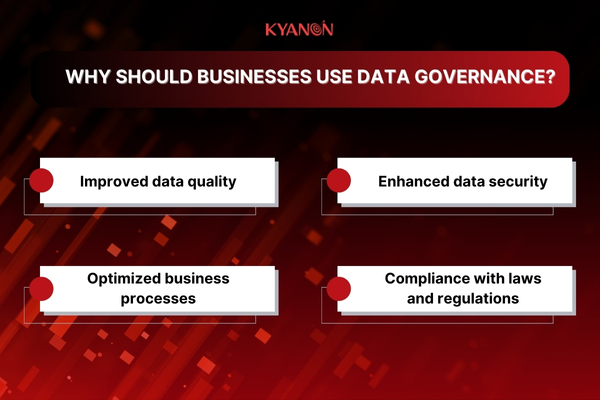
1.3. Challenges in Implementing Data Governance
Although Data Governance plays a crucial role in data management, businesses may face several challenges during implementation.
- Shifting mindset: Transitioning from traditional methods to data governance can be difficult due to the need to change employee habits and thinking.
- Unclear assignment of responsibilities: Without clearly defined roles and responsibilities within Data Governance, misunderstandings and errors can occur, leading to unintended consequences.
- Lack of resources and funding: This approach requires investments in technology, personnel, etc., which can be challenging for businesses with limited resources and finances.
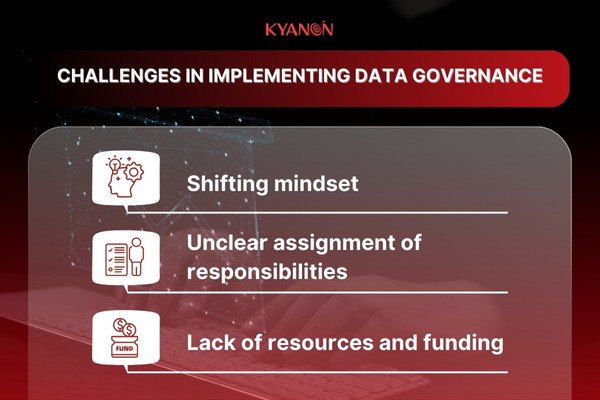
2. What is Master Data Management (MDM)?
2.1. Definition and scope
MDM – Master Data Management is a method of collecting, consolidating, and managing data from various sources to create a single, accurate, and consistent data source. This helps businesses reduce risks and make better decisions.
MDM encompasses all activities, processes, and tools for managing and securing essential business data.
2.2. Key data types
Core data types (Master) are fundamental and crucial data that an organization needs to manage to support business operations. Key types include:
- Customer data: Includes customer information such as name, address, contact information, and purchase history.
- Product data: Relates to products or services offered, including details like name, description, price, product code, and category.
- Location data: Information about locations such as branches, stores, warehouses, or other relevant geographic locations.
- Supplier data: Includes information about suppliers such as company name, address, contact information, and contract terms.
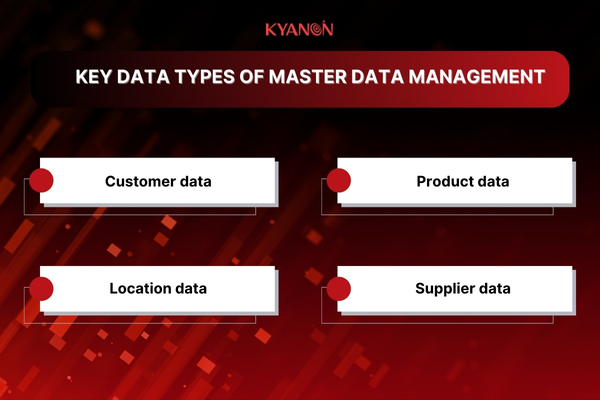
2.3. Master Data Management process
The MDM process involves several steps to ensure effective management of master data:
- Data Identification: The first step is to identify the types of data that are considered as master data. This identification helps businesses understand which data needs to be centrally managed.
- Data Collection: After identifying the data, businesses collect data from various sources such as internal systems, databases, and external sources.
- Data Standardization: In this step, data is standardized to ensure consistency and synchronization according to the established standards.
- Data Distribution: After being standardized, the data is distributed to other systems and departments within the organization. The goal is to ensure that all relevant units can access the data.
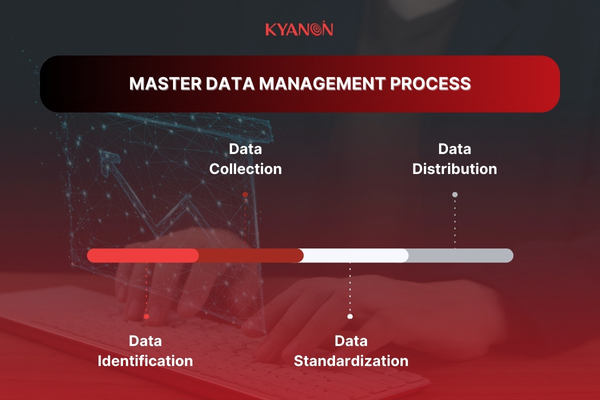
2.4. Benefits of MDM for businesses
With the increasing amount of data and the need for strict information management, Master Data Management has become an indispensable tool due to its benefits to businesses.
Firstly, MDM helps correct and standardize data, thereby improving data quality. This helps businesses make accurate decisions and reduces costs associated with maintaining duplicate data systems and resolving issues caused by poor data quality. By providing a comprehensive and unified view of customer information, MDM helps businesses enhance the customer experience.
2.5. Challenges in implementing MDM
Although MDM offers many benefits, applying this method to business processes presents several challenges.
To build an effective Master Data Management system, businesses must establish common data standards. However, unifying data formats and rules is a complex and time-consuming process.
Significantly, many businesses struggle to implement MDM due to a lack of cooperation from different departments within the organization to implement MDM. Many employees are accustomed to old systems and working methods, so they often find it difficult to change and adapt to new methods.
Additionally, businesses also face technological challenges as MDM requires complex and costly technology solutions.
Transform your ideas into reality with our services. Get started today!
Our team will contact you within 24 hours.
3. Comparing Data Governance and Master Data Management
3.1. Similarities between Data Governance and Master Data Management
- Focus on data quality: Both Data Governance and Master Data Management aim to ensure the consistency, accuracy, and integrity of data throughout the business.
- Support business strategy: By providing high-quality, consistent data, both play a crucial role in decision-making and supporting business strategies.
- Compliance with regulations and standards: Both methods ensure that all data within the organization complies with relevant rules and standards, including privacy and security regulations such as GDPR, CCPA, etc.
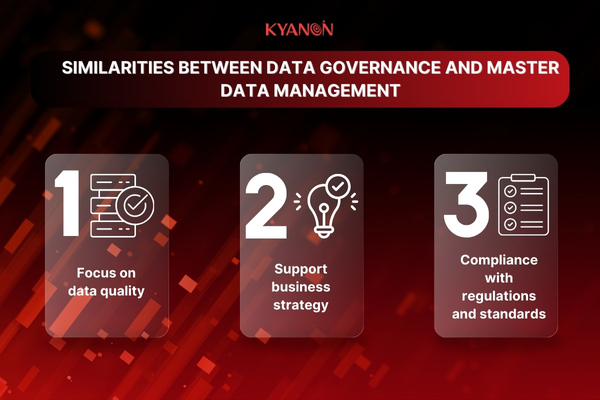
3.2. Differences between Data Governance vs Master Data Management
While both Data Governance and Master Data Management (MDM) are crucial components of business data management, they have distinct differences in focus, scope, and objectives.
| Criteria | Data Governance | Master Data Management (MDM) |
| Focus | Ensure that data across the entire enterprise is managed and used correctly while adhering to regulations, policies, and standards. | Manage and maintain master data such as customer, product, and supplier information. |
| Scope | The scope of data governance is broader, encompassing all types of data within an organization, from transactional and unstructured data to reference data. | The scope of MDM is narrower, primarily focused on managing master data files. |
| Objective | Ensure the integrity, security, and compliance of data within the business. | Provide a single, accurate, and consistent source of data. |
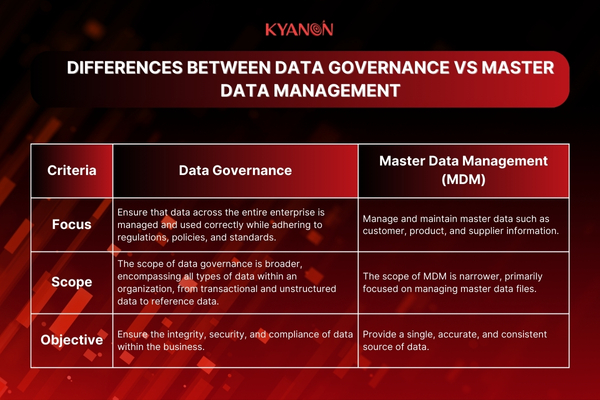
3.3. How Data Governance and MDM Support Each Other
In summary, Data Governance creates an ideal environment for MDM to operate. Meanwhile, MDM relies on the principles and regulations of Data Governance to ensure that data is managed accurately and efficiently. Combining these two approaches helps businesses build a solid data foundation.
3.4. The Relationship Between Data Governance and MDM
Data Governance and MDM are two essential factors in the development of any business. Combining these two methods helps businesses optimize the use of data, thereby improving the quality and value of data in business decisions.
4. How to Combine Data Governance with MDM?
Each method has its strengths, so to better combine Data Governance and MDM, businesses can consider:
- Combining Data Governance and MDM strategies: By combining these two methods, businesses can create a unified approach to data management, supporting business objectives and creating value.
- Building a Data Governance system: This system should clearly define roles, responsibilities, data quality standards, and policies on data access and use.
- Deploying MDM solutions: Implementing MDM helps businesses eliminate duplicate data, improve data accuracy, and enhance decision-making capabilities.
- Measuring the effectiveness of Data Governance and MDM: Businesses should use metrics to track progress and identify areas for improvement.
5. Tips to Improve Data Governance for Optimal MDM
To maximize the combined capabilities of Data Governance and MDM, businesses need to build specific strategic content:
- Create a diverse team: Build a team that includes experts from various fields, such as information technology, business, and data analytics. This diversity will bring different perspectives, helping to solve problems comprehensively and effectively.
- Build a comprehensive data catalog: Create a detailed catalog of main data entities, attributes, and relationships. This helps staff from different departments easily find and understand master data.
- Set clear quality goals: By defining clear data quality standards for each data type, the team can focus on improving data quality.
- Create a standard “dictionary”: A standard dictionary will help employees use the same language when discussing data, thereby avoiding confusion and improving understanding of data.
- Track the data journey: Tracking how data is collected, stored, processed, and used will help businesses identify potential issues in the data management process.
Data Governance and MDM are ways to effectively manage data and determine factors in the sustainable development of businesses in the digital age. The effective combination of these two methods will help businesses maximize the value of data, adapt to the continuous development of technology, and seize new business opportunities.
Contact Kyanon Digital today for advice and implementation of your business’s most suitable Data Governance and MDM solutions.

